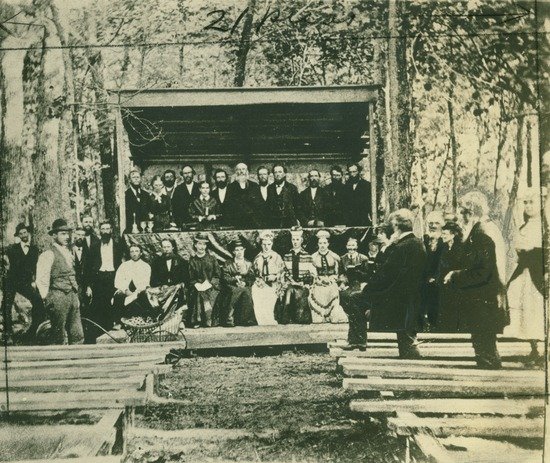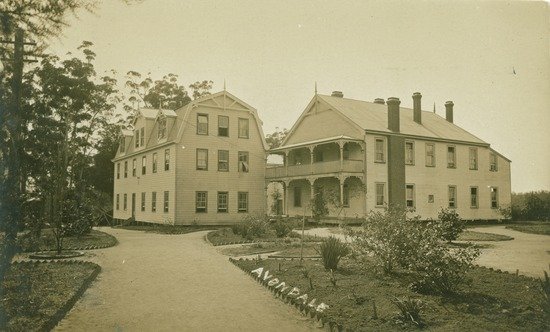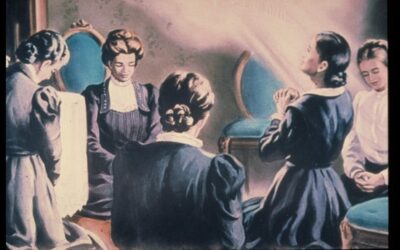Led by the Holy Spirit, Ellen G. White was given many messages, counsel, revelations, and visions about the Bible, history, prophecy, and how we can apply biblical principles to our daily lives.
She was also a well-respected co-founder of the Adventist Church. So which of these messages from God were directly related to the cultivation of the denomination?
The early Advent Movement wrestled with many questions regarding the most effective ways to spread the gospel. They searched the Scriptures but struggled with methodology. How could they best use their limited resources to share the hope of the newfound truths they discovered in the Bible?
And as they prayed for guidance, God did what He’s done since the Old Testament to help His people better understand His will—send a messenger (Acts 26:16-18).
So let’s look at the different visions and insight Ellen White was given regarding the development and nurture of the Seventh-day Adventist Church. This counsel involved:
- Emphasizing worldwide mission work
- Organizing as an official denomination
- Publishing ministry
- Healthy living and medical mission work
- Education
- The church in the last days
And we’ll also look at how this Spirit-led counsel is still relevant today. But let’s start by looking at how Ellen White helped the Adventist Church align with the great commission to spread the gospel around the world.
Emphasizing worldwide mission work

Courtesy of the Ellen G. White Estate, Inc.
Early on, the Adventist Church focused on sharing the Word of God with nearby cities and towns. But in 1874, Ellen White had a vision—an angel told her that the church must reach the whole world.1 The angel referenced Matthew 5:14-16, saying, “Your light must not be put under a bushel or under a bed, but on a candlestick, that it may give light to all that are in the house. Your house is the world.”2
With that, Ellen White brought this message to the rest of the church’s leaders. Efforts soon began to send missionaries out to faraway places.3
This emphasis on overseas mission work echos the words of Jesus Himself, when He called His followers to spread the word to everyone they encounter, wherever they go:
“Go therefore and make disciples of all nations, baptizing them in the name of the Father and of the Son and of the Holy Spirit, teaching them to observe all things that I have commanded you; and lo, I am with you always, even to the end of the age” (Matthew 28:19-20, NKJV).
Having taken this emphasis to heart, the missionary program has become a major field of work within the church. To date, the Adventist Church has more than 18 million members across the globe.4
Adventists believe that once the gospel reaches everyone, Jesus will come again. And there’s nothing we look forward to more than the second coming of our Savior.
Organizing the Seventh-day Adventist Church

Courtesy of the Ellen G. White Estate, Inc.
As the Advent Movement grew, Ellen White eventually received a vision explaining how it could grow stronger by becoming an organized entity.5
At that time the church had no official name,6 and many of its ministers lacked credentials to teach because there was no formal organization.7 This caused difficulty in maintaining their rights to own church property.8
In the beginning, many believers were hesitant to form an organized church.9 They worried it would hinder missionary efforts.10
Though their concerns were valid, she recognized what was needed to accomplish their plans. Then she pointed them back to the Bible, explaining that the early Christian church of the New Testament was also organized.11
Her visions addressed the following:12
- That they should have order and structure while avoiding needless formality. It should reflect the order of heaven, and of the early church.
- That becoming a unified body would protect them from Satan’s attacks to undermine their mission to spread the gospel.
- That order would protect them from relying on unfit or untrained ministers.
And so, after much discussion, the church’s main governing body—the General Conference—was formed.
Having an official organization and name allowed the church to significantly extend its efforts (especially in expanding its publishing ministry).13
When the General Conference would hold regular sessions to prayerfully discuss and vote upon important issues, Ellen White advised the church on further policies, even though she never held an administrative position herself.14 While she recognized that organizing as a church was necessary, she of course advised caution in proceeding.15 The church should always remember its grassroots.
The General Conference headquarters was originally located in Battle Creek, Michigan.16 And as a center of denominational administration, it became a large Adventist community. But with so many Adventists living in the same place, she knew they had to increase their efforts to reach the world around them. Her visions explained that so many more could be reached through publishing, medicine, and education.
The publishing ministry

Courtesy of the Ellen G. White Estate, Inc.
While the distribution of writings was happening from early on in the Advent Movement, one of the first big undertakings based on God’s messages to Ellen White was to start an official Adventist magazine publication.17 She told her husband, James White, to spearhead its establishment—even though it would cost more than they could afford.18
They wondered how they could pay for the paper. But God reassured her that their readers would donate money.19 And sure enough, they did.
Their magazine grew in popularity and eventually became known as the Adventist Review.
From there, the Adventist publishing department grew to reach the whole world. And today, we have 63 publishing organizations and 15 media centers.20 The largest of the publishing presses were the Pacific Press, which still operates today in Nampa, Idaho, and Review and Herald, which operated through 2014.
Here’s a summary of some of her visions about the publishing ministry of the Adventist Church:
- Starting an Adventist paper: In 1848, she had a vision telling her to proclaim the Advent message by sending out a regular publication. She saw that it would begin small, but would grow into an international endeavor.21
- She was encouraged to publish the paper weekly: In 1853, God showed her that the paper should come out more often. As she called for a need for more regular printing, she called Adventists to donate and spend their money more carefully so they would have enough money to donate to causes that needed it—like the paper.22
- She was told there should be publishing houses in other countries—particularly Australia: In 1875 she had a vision about spreading their publishing houses to other countries. She introduced this concept to the Battle Creek church as she discussed ways to reach foreign countries with the gospel.23
In the end, literature evangelism helped the church to grow by giving us a chance to share our beliefs with the world. Unlike traditional evangelism, such as tent meetings and preaching series, it can transcend travel and language barriers. Books, pamphlets, and magazines could be distributed to places the Adventist Church was not yet able to travel to, and be translated into several different languages.
And because of the counsel the Holy Spirit provided through Ellen White’s visions, many more people have been reached with the gospel.
Healthy living and medical mission work
Ellen White also received a vision explaining how following the principles of a healthy lifestyle helps us to better serve others, share the gospel, and grow the church.
In the 19th century, many were ill from a lack of hygiene, nutrition, and safe medical procedures. God saw a need to show people how to take care of their bodies so they could live longer, happier lives.
This vision, which was given to her on December 25th,1865 in Rochester, New York, told her to establish a health center to help people recover, and to teach them how to better care for themselves.24
Here’s a summary of some of her visions on this topic:
- She is told that God’s people should become more involved in health reform: In 1863, Ellen White was given a vision that explained that taking care of one’s body is a spiritual duty. This is because one’s physical condition can affect their mental and spiritual condition. This message was particularly relevant for the time because many Christians—Adventists included—regularly consumed alcohol and used tobacco products that weakened their health. And while she had already received a vision in 1848 about the dangers of these products, many Adventists still struggled to remove them from their lives.
- She is told to encourage temperance in eating: This vision explained the dangers of overeating.
- She is told to encourage positive eating habits and to eat that which is “healthful”: This vision showed Ellen White positive eating habits like eating at regular times, and avoiding eating between meals. It also showed that the original diet of Eden—fruit, grains, and nuts—is the ideal diet for the human body.
- She is told to place Adventist sanitariums in the country instead of the city: In 1901, while in Los Angeles, California, Ellen White had a vision telling her to locate their sanitariums in the countryside. The vision also listed the health benefits of sunshine, fresh air, and light manual labor. She received this message around the same time church leaders were discussing where they should open a new sanitarium.
The visions warned her of the dangers of alcohol, tobacco, and unbalanced diets, so she passed that knowledge on to the people around her.25 The advice she gave was revolutionary for her time, as many weren’t aware of the damaging effects of these choices.
She was even told in her visions where to establish these medical centers. In fact, she helped select the locations for the Paradise Valley, Glendale, and Loma Linda sanitariums.26
Ellen White saw that these centers should help people grow spiritually. Just as Jesus ministered to the sick, she understood that the church could reach people by tending to their physical needs.
Since then, the Adventist healthcare system has grown. And as of today, the Adventist Church has roughly 200 hospitals.27
Education

Courtesy of the Ellen G. White Estate, Inc.
The education system during Ellen White’s time left much to be desired. Most children learned about life as a result of their parents bringing them to work with them at local factories. They weren’t given the opportunity to learn the necessary basic skills like reading or writing. And they knew very little about the Bible.
From the influence of the Industrial Revolution, most educational goals of the time were to train children for a lifetime of factory work, or have them pick up whatever trade their parents practiced.
Ellen White knew something had to be done about the education of young people. She became interested in helping experience a richer childhood while promoting church growth through Adventist education.
God gave her insight for developing church schools, where students could grow both educationally and spiritually.28
He even showed her ideal locations for several Adventist schools.29
For one of these locations in particular, however, many church members were skeptical of the placement of Avondale College in Cooranbong, Australia. They felt it was unsuitable for the school farm they planned to put on it.30
But because she was following the guidance of the Holy Spirit, and not her own whims, Ellen White insisted that it would make the perfect place—and was even putting some of her own money into securing the land.31
And then it all became clear that this was the right move. Because people underestimated the land, the church was able to purchase it at a low price, and soon Avondale College became a flourishing institution.32
Since then, many more Adventist schools have been founded. And today, Adventist schools make up the biggest Protestant school system around the globe.33
A summary of some of her visions on this topic are listed here:
- She was told how Christian schools should be run to train students to be better followers of Christ: When church leaders were debating how to run Adventist schools, Ellen White had a vision in the middle of the night showing her what Adventist schools should be like. Some of these concepts included founding schools in the countryside where the pupils would be exposed to more wholesome influences, and teaching students the value of manual labor.
- She was told to purchase the Avondale property: In 1894, God showed Ellen White that the supposedly “barren” property the church had selected would be perfect for the Avondale school.
- She was shown the location of Loma Linda University: After her return from Australia, Ellen White was instructed that the church should establish more sanitariums in southern California. She was shown specific locations—one being the property that would later hold the Loma Linda Sanitarium which later expanded to include Loma Linda University.
In the end, it was these visions that showed the church how to grow and witness to others through their service. And with the progress we made, we became a world church.
These visions not only provided guidance explaining how the church can grow—they predicted how each of these ministries would spread to reach the world around them. And by trusting in the Holy Spirit, the Adventist Church became the organization it is today.
What visions did Ellen White have about the church in the last days?
Ellen White also had numerous visions regarding the difficulties facing Christians in the last days.
The “last days” refer to the final period of earth’s history, right before Jesus returns at the Second Coming. During the last days, God’s people are given the responsibility to spread the gospel to the places and people not yet reached (Matthew 24:14).
But while we wait for Jesus to come back, many more significant events will come to pass. To better prepare people, God gave Ellen White visions explaining the trials the Adventist Church would soon have to face.
Some of her visions and prophecies about the end-times include:34
- The dangers of pantheism: Some Adventist church leaders and members accepted pantheism and attempted to bring it into the church. But Ellen White was warned in vision against it. She had a dream of a ship about to collide with an iceberg. The captain in this dream ordered his crewmen to “meet it” head-on. The ship hit the iceberg, and the iceberg broke into pieces, but the ship and its crew were safe. She understood the iceberg to represent pantheism’s influence. So she met it head-on by warning the church about it at public meetings. With her wise counsel in mind, the church decided to confront the topic and openly discuss how it actually ends up contradicting scriptural teachings.
- The rise of spiritism: In 1849 she had a vision warning her of the rapid acceptance of spiritism, or trying to communicate with the dead. It had already been a common concept in Rochester, New York, as people would hear things and attribute them to ghosts or spirits. These instances were referred to as “rappings” or “knockings.” But she predicted that some forms of spiritism (sometimes called spiritualism) would soon be taught even in Christian churches, so Christians should be careful and test all new ideas in comparison with the Bible.
- That people will pit science against religion:35 Charles Darwin’s theory of evolution became prevalent during Ellen White’s lifetime. She warned that more and more people would come to accept it. But the Bible was never meant to be in opposition to science.
While many of these things were cautionary, her vision in 1857 did include the hopeful information that in the last opportunities given before Jesus returns, many more people will accept the gospel.36
(The Ellen G. White Estate has compiled Ellen G. White’s writings on the end of time in a book titled Last Day Events. Coupled with her famous book, The Great Controversy, much insight is provided about what will happen in the span of time just before Jesus’ second coming.)
It’s true that a lot of frightening things will come to pass in the last days. But we don’t need to approach them with fear or uncertainty. Jesus wants us to be aware of these events so we can trust in Him for guidance and protection.
And even though Ellen White’s visions might include corrections or warnings on this subject, they’re ultimately intended to give the reader hope in Jesus. Because even though we might go through difficult times, we can rest in the assurance that God will guide us through.
And the wonderful thing about the last days coming to pass is that we will soon get to see our savior in person!
How Ellen White’s visions are still relevant today
 So many of Ellen White’s visions had a direct impact on the church—whether that was through suggesting a direction for ministry or guiding people back to forgotten biblical truths.
So many of Ellen White’s visions had a direct impact on the church—whether that was through suggesting a direction for ministry or guiding people back to forgotten biblical truths.
And while there are some visions she had that were specific to her time—such as advice given to specific individuals or counsel on how to live in the nineteenth century—so much of what she received with her prophetic gift is still relevant today.
For example, her visions on healthy living provide excellent information on how to best care for our minds and bodies. And with health issues abounding and obesity rates increasing, this message may be more important than ever.
Not to mention, her contributions toward the fields of missionary work, medical care, and education are still impacting people across the globe.
She also offers counsel on how to draw closer to God, and how to apply Christian principles to every aspect of life. And while we might face different struggles today than people did back then, it reminds us to focus on what really matters. In the midst of distraction and confusion, she urges us to focus our attention on Jesus Christ.
After all, the entire purpose of Ellen White’s visions was to point back to Jesus and His word. This may be why the “spirit of prophecy” is referred to as “the testimony of Jesus” in Revelation 19:10.
The fact that God takes the time to inspire and lead prophets shows just how much He cares about us. He wants to use the gift of prophecy to eliminate confusion and fear from our daily lives. He wants to answer our questions and reassure us of salvation through Him.
When God’s people ask Him for guidance, He never leaves them in the dark. Instead, He gives His Holy Spirit and sometimes sends special messengers to show them how to live like Jesus.
Throughout her many years of serving the Lord, God continued to lead Ellen White’s counsels with more visions, which she wrote down and can be found in works like The Great Controversy, Testimonies for the Church, and Selected Messages.
It’s not hard to see how Ellen White was able to occupy such a large role in guiding the Adventist Church with the Holy Spirit’s leading. From confirming biblical teachings about the heavenly sanctuary to the Investigative Judgment to cautioning the young denomination on common pitfalls and temptations related to church organization, God used her to influence and support her fellow believers in spreading His gospel.
If you want to learn more about books and articles by Ellen White,
Or, if you want to know more about Adventist doctrines in general,
- Pfandl, Gerhard, “Ellen G. White’s contributions to the Seventh-day Adventist Church,” [↵]
- Ibid. [↵]
- Ibid. [↵]
- “To Every Nation,” [↵]
- White, G. Ellen, Early Writings, p. 97. [↵]
- Douglass, E. Herbert, Messenger of the Lord, p.184. [↵]
- Ibid. [↵]
- Ibid. [↵]
- Ibid. [↵]
- Ibid. [↵]
- Early Writings, p. 97. [↵]
- White, Arthur L., Ellen G. White: Volume 1—The Early Years: 1827-1862, pp. 216, 286-289, 420-424, 437-440, 445-461. [↵]
- Messenger of the Lord, p. 184. [↵]
- Ibid, p.185. [↵]
- Ibid, p. 184. [↵]
- Ibid. [↵]
- Pfandl, https://www.ministrymagazine.org/archive/2015/06/egw [↵]
- Ibid. [↵]
- Ibid. [↵]
- “To Every Nation,” [↵]
- White, Ellen G., Life Sketches of Ellen G. White, pp. 125-128, 283; White, Arthur L., Ellen G. White: Volume 1—The Early Years: 1827-1862, pp. 163-164. [↵]
- Early Writings, p. 95. [↵]
- Life Sketches, p. 283. [↵]
- Pfandl, https://www.ministrymagazine.org/archive/2015/06/egw [↵]
- Douglass, https://egwwritings.org/read?panels=p656.1678&index=0, p.162. [↵]
- Ibid, p. 163. [↵]
- “Hospitals and Sanitariums,” [↵]
- Pfandl, https://www.ministrymagazine.org/archive/2015/06/egw [↵]
- Douglass, https://egwwritings.org/read?panels=p656.1898&index=0, p. 190. [↵]
- Ibid. [↵]
- Ibid. [↵]
- Ibid. [↵]
- Pfandl, https://www.ministrymagazine.org/archive/2015/06/egw [↵]
- https://ellenwhite.org/correspondence/184345 [↵]
- White, Last Day Events, p. 176. [↵]
- Ibid. [↵]
More Answers
8 Pieces of Advice from Ellen White’s Counsel for Families
8 Pieces of Advice from Ellen White’s Counsel for FamiliesFamily—it can be the source of the most wonderful and frustrating parts of life. And it’s in the family that individuals develop their identities and learn the behaviors that either propel them forward or...
Ellen White’s Visions and Prophecies
The New Testament upholds prophecy as a spiritual gift that will continue to the end of time (Ephesians 4:11–14).
Ellen G. White’s Counsel on College Education
Ellen G. (Harmon) White, a significant co-founder of Adventism, is often known for her practical and spiritual guidance for proper childhood education. But she was also significantly involved in the development of Seventh-day Adventist higher education.
Ellen G. White or the Bible—Which is More Important to Adventists?
The Bible—without a shadow of a doubt—is the most important book. It’s the standard we use to test all other writings, including those of Ellen White.
Do Adventists Worship Ellen White?
Ellen White was a co-founder and leader in the Seventh-day Adventist Church from its beginning. Adventists believe that she had the prophetic gift (Ephesians 4:14; 1 Corinthians 12:28) and passes the biblical tests of a prophet.
Ellen White and the Sabbath
The Sabbath is an important topic in the Seventh-day Adventist Church. It shouldn’t surprise you, then, that Ellen G. White, a co-founder of the church, studied the Bible’s teachings on the Sabbath and wrote large amounts about it.
Are Any of Ellen G. White’s Prophecies Yet to Come True?
Yes. Some prophesied events have yet to happen. Ellen White, a co-founder of the Seventh-day Adventist Church, demonstrated many times over that she had the spiritual gift of prophecy (1 Corinthians 12, 14). Some of her predictions’ timelines have already passed, and those prophecies have been fulfilled.
What Ellen G. White Said About Using the Bible in Education
Ellen White, one of the founders of the Seventh-day Adventist Church, believed that education was not complete unless it was founded upon the principles of the Bible.
Ellen G. White’s Counsel on Christian Education
Ellen White, a co-founder of the Seventh-day Adventist Church, saw that the educational system during her time was lacking and looked for ways to improve it—not only in the United States but throughout the world. And as part of her life of ministry, she sought out practical ways to be better stewards of our minds, bodies, and the lives we’re given.
What Was Ellen G. White’s Counsel on Music?
At its core, music is a collection of tones, sounds, and rhythms that creates a melody. It’s also much more than that.
How Ellen White’s Teachings Can Improve Your Health
Healthcare in the nineteenth century was said to leave “more disease than it took away” with its use of bloodletting and “medicines” like mercury and arsenic. As people questioned these methods, new approaches popped up. But which ones were reliable?
Ellen White’s Spiritual Counsel on Marriage
As one of the founders of the Seventh-day Adventist Church, Ellen G. White was held in high regard. She was a prolific author and was heavily engaged in the mission of the denomination, prayerfully pursuing the guidance of the Holy Spirit.
Were All Ellen White’s Books Inspired?
As the most translated female author in the world, Ellen White wrote numerous books, articles, pamphlets, and more. These writings focused on developing Christian character, emphasizing Bible truth, practical tips for living well and staying healthy, and discussing effective methods of delivering the gospel message to the world.
What is the Spirit of Prophecy?
The Spirit of Prophecy, one of the spiritual gifts of the Holy Spirit, is described as “the testimony of Jesus” (Revelation 19:10) and, according to Belief 18 of the 28 Adventist Fundamental Beliefs about Scripture, it will be one of the distinctive characteristics of the remnant of devout believers in the end times (1 Corinthians 14:1-5; Revelation 19:10; Revelation 12:17).
How Ellen White Influenced the Adventist Health Message
Seventh-day Adventists are known for their emphasis on healthy living. And Ellen G. White was a significant influence in the development of this priority and practice among Adventists.
What Did Ellen White Say About End-Time Prophecy?
We can read in Scripture about the series of events and signs that lead up to the second coming of Jesus Christ. And it sounds pretty intense, to say the least. The symbolic nature of the language of prophecy also can make things tricky to understand at first.
Ellen G. White’s Travels and Worldwide Mission
Though Ellen White, a co-founder of the Seventh-day Adventist Church, is best known for her ministry in the United States, she also traveled to twelve other countries in her lifetime—a big accomplishment in the 19th century when travel was strenuous and long.
Were All Ellen White’s Visions About the Future?
While the visions God gave Ellen White were often about the distant future or last-day events, she had many others that addressed different topics. They may not be discussed as much as her visions about the Second Coming or the End Times, but they tackled some timely topics for her day.
Ellen White and Adventist Healthcare—Ahead of Their Time
Medical care in the mid-1800s was primitive, to say the least. Basic concepts we take for granted—such as proper handwashing or recognizing the dangers of bloodletting—were nonexistent. And doctors often had little more than nine months of training!
What is the Spirit of Prophecy (Books 1–4) by Ellen G. White?
Applying biblical prophecy to history, recent events, and especially the future, can be a daunting task. Even a little scary for some. But even so, we can’t help but want to know more. We want to be prepared—to feel like we know how to weather the storm.
What Did Ellen White Teach About Vegetarianism?
One thing you might have heard about Seventh-day Adventists is their emphasis on a vegetarian lifestyle. If you’re wondering why that is, it goes back to our church’s humble beginnings:
What Does Ellen White Say About Prayer?
Have you ever had a burden you just had to tell someone, but you were afraid of being judged if you did? Ellen G. White, an important figure in the Seventh-day Adventist Church and a prolific writer, described prayer as talking to God in a personal way—He’s the friend we can tell everything to.
Who Were Ellen White’s Children?
Being the children of a woman with a prophetic calling from God had its blessings and its challenges.
In this overview, we’ll look at the highlights of the lives of Ellen White’s sons during her many years of ministry, as well as the ways each of them decided to serve Jesus Christ:
Steps to Christ: A Guide to a Relationship with Jesus
Whether you’re just starting your journey with Jesus Christ, are coming back after some time away, or have had a relationship with Jesus for years, using a book—in addition to the Bible—to guide or supplement that relationship can be helpful, comforting, and joyful.
How Can I Know Ellen White’s Messages Were From God?
It’s natural to be a bit skeptical when you hear about someone being “divinely inspired,” or that something is a “message from God,” etc. And we expect nothing different if you’re hearing about Ellen White, an influential co-founder of the Seventh-day Adventist Church, for the first time. After all, the Bible tells us that we’re supposed to test these things!
Was Everything Ellen White Said Divinely Inspired?
The Seventh-day Adventist Church believes that many of Ellen White’s messages were inspired by God. But that doesn’t mean everything she ever said was prophetic, or meant to be taken as direct instruction from God.
Ellen White and the Great Controversy
The Great Controversy is a book written by Ellen G. White, a co-founder of the Seventh-day Adventist Church. Written in the late 1800s, the book is the last in a series and describes the connection between Bible prophecy and post-biblical history. It also discusses factors that will characterize last-day events.
Was Ellen G. White Really a Prophet?
Seventh-day Adventists believe that Ellen G. White fits the Bible’s definition, description, and criteria of a true prophet. Her words and deeds have stood the test of time and always glorified God and the Bible above all else.
How Did Ellen G. White Help Found the Adventist Church?
Ellen G. White, a humble woman from Gorham, Maine, was a co-founder of the Seventh-day Adventist Church and a key leader in it from its very beginning. Following the Holy Spirit’s guidance at a young age, she dedicated herself to studying Scripture and became involved in the Advent Movement.
Didn’t find your answer? Ask us!
We understand your concern of having questions but not knowing who to ask—we’ve felt it ourselves. When you’re ready to learn more about Adventists, send us a question! We know a thing or two about Adventists.





























